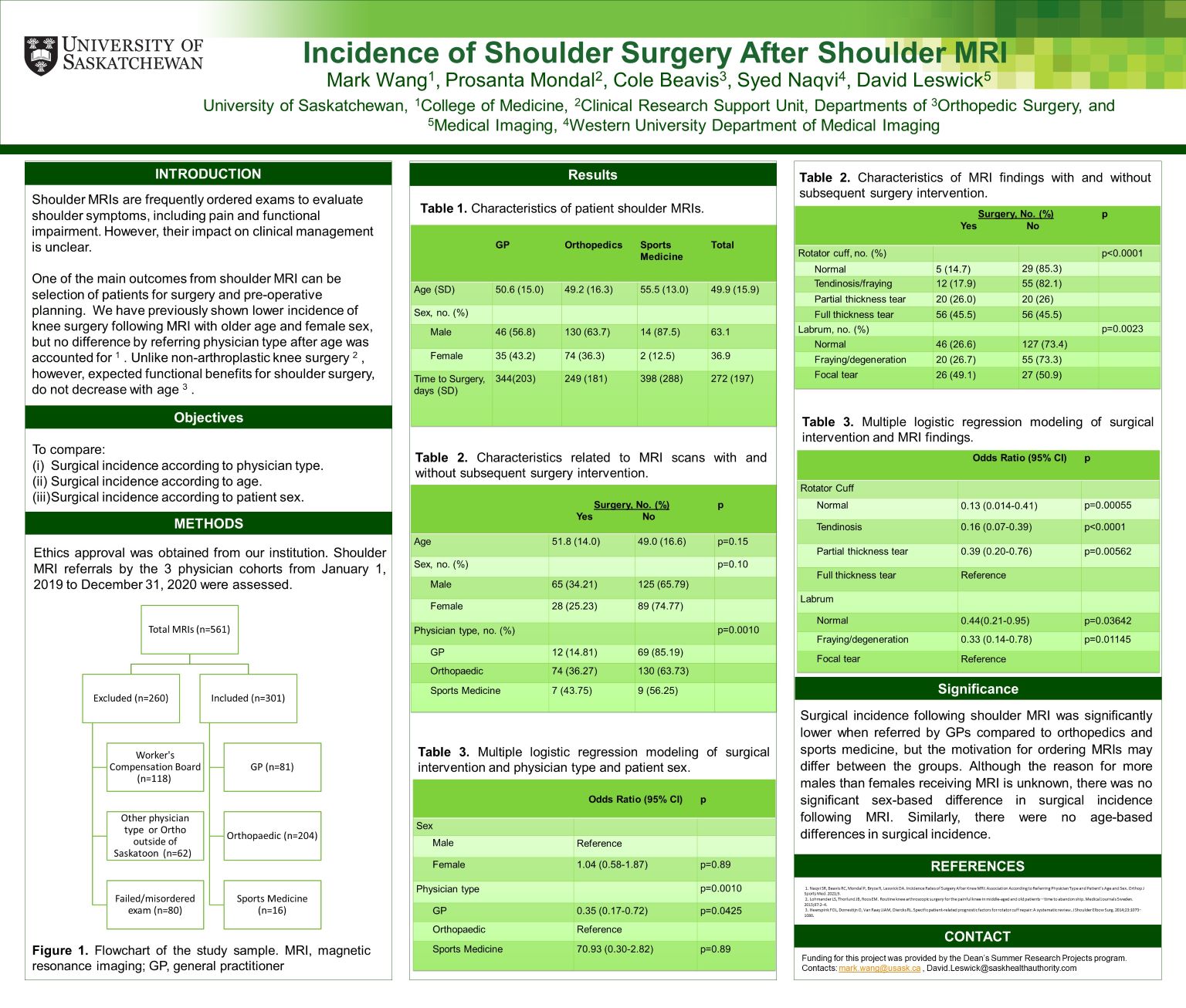
Incidence of Surgery After Shoulder MRI According to Physician Type, Patient Age, and Patient Sex
Mark Wang
Objective: To compare surgical incidence after shoulder MRI referrals by orthopedic surgeons, family physicians (GPs), and sports medicine physicians. Secondary objectives were to assess the impact of patient age, sex, and MRI findings on the incidence of surgery.
Material, Methods, and Procedures: Ethics approval was obtained. Shoulder MRIs performed over 2 years-time were assessed. Subsequent surgical intervention following MRI was compared among referral groups. Associations of surgery with age, sex and MRI findings were also assessed. Chi-square test, analysis of variance, and univariate/multivariable logistic regression were used for statistical analysis.
Results: Overall, 301 MRIs were evaluated (GP=81, Orthopaedic=204, Sports medicine=16). The mean age was 49.9 years; 37% female versus 63% male. Surgical incidence was 15% for GPs, 36 % for orthopaedics, and 44% for sports medicine. Surgery was 65% less likely for GP than orthopaedic patients (p=0.004). There were no age-related differences. Post-MRI surgical incidence by gender was similar (25.23% female, 34.21% male, p=0.104). Patients with full thickness rotator cuff (RC) tears and labral tears were more likely to have surgery.
Significance: Surgical incidence following shoulder MRI was lower for GP patients. Although more males received MRIs, there was no significant sex-based difference in surgical incidence following MRI.
